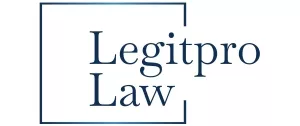- within Finance and Banking topic(s)
- in United States
- with readers working within the Utilities and Law Firm industries
- within Finance and Banking, Government, Public Sector and Energy and Natural Resources topic(s)
- with Senior Company Executives, HR and Finance and Tax Executives
Introduction
The Reserve Bank of India (RBI) has made a bold move to rationalize India's rapidly developing fintech environment with the issuance of the Digital Lending Directions, 2025. Released on May 8, 20251, this framework represents a major regulatory milestone since it brings together previous dispersed guidelines on fair practices, digital lending standards, and default loss protection into one unified code.
The step has been taken when online lending has expanded significantly with banks, NBFCs, and fintech companies extending instant credit with a click on the screen. Though this expansion has enhanced access to finance, at the same time, it has also created apprehensions of overcharging through hidden costs, misuse of customer information, and forceful recovery tactics2. Through the introduction of a standardized framework, the RBI aims to provide for a more transparent, secure, and reliable lending environment. The objective is not merely to enhance consumer safeguards but also to make sure financial institutions and their online counterparts act with enhanced responsibility in a more technologically advanced marketplace.
Key Measures Introduced
One of the most remarkable things about the new framework is its broad reach and universality. In contrast to the selective application of earlier guidelines, the 2025 Directions now come uniformly to commercial banks, cooperative banks, non-banking financial companies (NBFCs), housing finance companies, and even all-India financial institutions3. By putting all big lending channels together under one roof, the RBI has not just ensured a level playing field but also eliminated much of the uncertainty that existed before on whose part compliance was necessary. This clarity should lead to a healthier and more disciplined digital lending space.
Yet another area of central importance to the framework is that of the Lending Service Providers (LSPs) the fintech players and intermediaries who have emerged as the go-between for borrowers and licensed lenders. The RBI has mandated banks and NBFCs to conduct rigorous due diligence prior to interacting with such partners,4 while also laying down lucid contractual arrangements between the two. This step is also important because most of the earlier grievances in online lending were concerning mis-selling of products, coercive recovery practices, or misuse of customer information by third-party applications. With these controls in the picture, accountability is no longer diffused but squarely attached to the regulated entity.
For borrowers, probably the most customer-facing and visible change is the Key Fact Statement (KFS) introduced. Prior to signing up on a loan, every individual has to be provided with a straightforward, standardized document holding all key information interest rates, processing fees, repayment terms, and penalty terms5. Additionally, the entire loan kit – sanction letter, terms and conditions, and even the privacy policy – should be signed electronically and delivered automatically to the borrower. This is a departure from the hidden habits of yesteryear, where critical information often found its way into fine print or was signed off with nothing but a click of the OTP. The intention is obvious: no one who borrows should do so without understanding precisely what they are getting themselves into.
The Directions also enhance the sanctity of fund flows. All disbursals have to be credited directly into the bank account of the borrower, whereas repayments have to be credited directly back to the account of the lender. By disallowing third-party pass-through accounts, the RBI has shut off routes commonly used for money laundering or siphoning off funds. Borrowers also now have a cooling-off period, a brief time within which they may rethink and even opt out of a loan without incurring any cost. This is a very effective protection against ill-considered borrowing decisions particularly in a digital age where loans are sanctioned within minutes.
Lastly, the framework gives serious consideration to protection of data and grievance redressal. Lenders and their associates can gather information only after specific borrower consent, and all such information needs to be stored within India. In the event that the data is processed outside the country, the law mandates it to be brought in and deleted within 24 hours, thus providing borrowers with greater confidence that their personal information will not be exploited. On top of this, all regulated lenders and service providers are required to appoint grievance officers to deal with complaints from customers, with the RBI itself to act as an escalation authority if matters are still not resolved. This multi-layered mechanism prevents the borrower from being helpless in case of disagreements with digital lending apps.
Impact on the Banking System and Consumers
For the banks and NBFCs, the new Directions represent a decisive move toward greater compliance and increased accountability. Institutions will now need to invest in enhanced digital infrastructure from secure e-signature systems that align with the IT Act to better data security frameworks and borrowers' communication channels that are both transparent and timely6. This necessarily increases operating expense and imposes an extra compliance burden on lenders but the balancing act is worth it. By specifying clearly, the roles and responsibilities between regulated lenders and their fintech partners, the RBI has minimized the grey areas that nearly-often led to disagreements and reputational losses7. Over time, these steps should tighten market discipline, build increased confidence, and add much-needed integrity to an industry that has long been under fire for its inscrutable and abusive practices.
For customers, though, the effect is considerably more tangible and transparent. The new Directions guarantee to simplify digital lending into a safer and more open process. Loaners will now enter loan contracts with a much better understanding of what they are agreeing to due to the compulsory Key Fact Statement and the necessity that all loan documents be e-signed and forwarded automatically. The provision for a cooling-off period provides an added level of safeguarding, allowing the individual time to think through their choice and not be caught out by careless clicks on lending platforms. Equally important, the stringent data-privacy standards ensure that individuals' personal and financial data will no longer be available to all and sundry, or abused by third-party sites.
Equally significant is the RBI's insistence on direct fund flows between the borrower and the regulated entity. By eliminating third-party pass-throughs, the framework curbs risks of fraud and ensures that repayments are always credited correctly. To further safeguard consumers, the RBI has announced plans to publish a public directory of all approved digital lending apps8. This action, straightforward but effective, gives borrowers the ability to identify legitimate sites and cynical players something that has been a recurring issue over the past few years. Together, these reforms shift the power balance towards the consumer, giving borrowing decisions the ability to be made with more confidence and less risk.
Conclusion
The Digital Lending Directions, 2025 are not merely another regulatory note; they are a true reboot for India's digital credit landscape. By bringing together disperse rules into a one-stop framework and infusing principles of openness, responsibility, and consumer protection9, the RBI has really chalked out a clear line between ethical innovation and unbridled exploitation. The message is simple technology in finance is more than welcome, but it needs to work on terms that are fair, secure, and responsible.
For lenders, the future will not be easy. Transitioning to a compliance-driven regime will require investment in technology, training, and governance. But there is also a silver lining: a chance to establish credibility, mitigate risks, and enhance long-term relationships with borrowers. Far from inhibiting innovation, the design encourages institutions to innovate responsibly, with consumer trust as the bedrock.
To borrowers, the advantages are much more immediate. The guarantee of transparent loan terms, protection of individual information, and access to grievance redressal mechanisms render online borrowing less scary and more credible. Over time, such protection can induce more individuals to opt for formal credit, deepening financial inclusion while decreasing reliance on unregulated lenders10.
Finally, the Directions seek a balance between the ease and speed of digital finance and the age-old banking tradition of trust. Well-executed, they could make digital lending not just safer but also transform it into a system where technology is in the service of the borrower and not vice versa. This is what India's financial future sorely needs as it walks further into a digital-first economy.
Footnotes
1. Reserve Bank of India, Press Release: RBI Issues Digital Lending Directions, 2025 (May 8, 2025)
2. A Proposal for Licensing & Regulatory Regime for India (Nov. 2021).; The Economic Times, RBI Flags Concerns Over Rising Cases of Mis-selling in Digital Lending (Oct. 12, 2022).
3. Reserve Bank of India, Digital Lending Directions, 2025, RBI/2025-26/XX (May 8, 2025).
4. Reserve Bank of India, Guidelines on Digital Lending (Sept. 2, 2022).
5. Reserve Bank of India, Digital Lending Directions, 2025, RBI/2025-26/XX, cl. 7 (May 8, 2025).
6. PwC India, Digital Lending in India: Shaping the Future (2023)
7. KPMG, Fintech in India: Powering a Digital Economy (2022)
8. Reserve Bank of India, Press Release: Publication of List of Valid Digital Lending Apps (Dec. 2022).
9. Vivek Dubey, Digital Lending and Consumer Protection in India: A Regulatory Perspective, 55 Econ. & Pol. Wkly. (2023).
10. World Bank, Responsible Digital Credit: A Policy and Regulatory Framework to Protect Consumers (2022).
The content of this article is intended to provide a general guide to the subject matter. Specialist advice should be sought about your specific circumstances.


